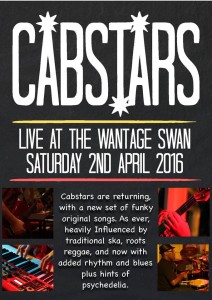 Unfortunately, at our first gig at The Swan Wantage, in front of a lively crowd, my brand new Ampeg SVT 7 PRO amp decided that it would sporadically cut out for a few seconds. At first nobody noticed, then Ben the singer thought I was messing about – missing cues on my first gig with the band. At the break I explained. Very pissed off.
Unfortunately, at our first gig at The Swan Wantage, in front of a lively crowd, my brand new Ampeg SVT 7 PRO amp decided that it would sporadically cut out for a few seconds. At first nobody noticed, then Ben the singer thought I was messing about – missing cues on my first gig with the band. At the break I explained. Very pissed off.
I tried all manner of adjustment. It could be some sort of cut-out, so I tried turning the input gain right up flickering the overload light, and turning down the Master Volume to relieve any load on the main amp. But as this was a pub, with a 1000 watts amp – even though class D, overload should not have been a problem. But the cut-outs continued, just enough to irritate us; so I ignored them and played the notes regardless. Our singer did say something to the audience about my problem. Afterwards I made it clear to him that you don’t do that; none of them would otherwise have noticed 🙁
We received some nice comments, and one of the Blur roadies (who lives in Wantage) came up afterwards and was complimentary about the bass. (And he hadn’t noticed the cut-outs.) Back at home I emailed GAK the retailer, and Ampeg Tech Support. I found a thread on BassChat for SVT 7 PRO owners, with my problem as a fairly common reason for people getting rid of them… So having spent such a lot of time researching to buy it, I spent Sunday working out whether to return, and what to replace it with…
A review of the much newer, German-design Warwick LWA 1000 by Jon Herrera, revealed it has two channels. Max in the guitare department at Thomann got the guys in their shop to run a bass and a synth through one simultaneously – as I would like to do for gigs when we don’t have Steve on keys. (The manual wasn’t clear whether that was possible.) I’d also emailed Jon Herrera, who when North America got out of bed, emailed to say yes – and it’s really cool you’ll love it.
Thomann offered me B stock model for £100 cheaper, although the rack ears were £45… so the card was deployed once again. GAK accepted the return promptly, and I waited…
So now I’ve got the new head in the my 3u Gator case, which seems totally fine, protected by two splendid cabinet covers from Roqsolid; and then to make this Delivery Day of the Year, the 5-string bass I’d ordered a while back from a shop in Northern Ireland, arrived.

This was made by Revelation Guitars, a company run by Alan Entwistle – the pick-up and guitar electrics guru from way back in the day. There’s a back-story here:
Last summer, I was going to buy a Rickenbacker 12 string electric, for playing those glorious Byrds, Tom Petty and more recent chorused-out type sounds. I took huge amounts of cash went I travelled to see several – but didn’t like playing them. The necks were horribly cramped, and they were just did not have any pleasurable feel to them (compared with Gibsons or Fenders). Gary Good in Cowleys Road’s Music Box suggested trying the Revelation 12 stringer. He ordered one, sunburst, shaped like a Fender Jaguar, which took weeks having been delivered to an unconnected Music Box shop in St Ives Cornwall. But straight out of the cardboard box, it was set up perfectly, and I took it immediately to Sparky’s Flying Circus at the Half Moon pub and played every 12 string song I knew, from Pretty Woman to Eight Miles High. A great guitar, for all of £224!!
The 5 stringer was of course more expensive – at £229. And it’s a great guitar too. Much better than the £900 one I played for half an hour in PMT (with their bass guitar expert telling me that a 5-stringers’ top and bottom strings are both tuned to B – in octaves you know… he’s not a bass player – and did admit it.)
So I’m feeling washed out, penniless, and surrounded by packing, boxes and plastic bags. And hopefully Thomann will send me a UK kettle lead! Plus I’ve got to get used to playing with 5 strings.
But if you’re going to play bass, play bass!! It’s all about getting as much bottom as possible (no RN jokes please) – which is the prime ska/reggae characteristic.